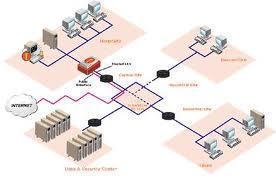MPLS VPN
An MPLS VPN (Multi-Protocol Label Switching Virtual Private Network) is a virtual private network that uses MPLS to forward data packets from one device to another by tunneling through the Internet. MPLS VPNs transfer any data packet type to any device within the network and can be used for many applications including communication, data transfer, and information access on the network’s client and server side.
How MPLS VPNs Work
MPLS VPNs create a tunnel through the Internet in which two or more devices can exchange information. In order to do this, MPLS VPNs create data packets of information that are encapsulated with both a header and label stack. Each label within the label stack has information about what the data packet contains, where it came from, and where it is going. Each node in the VPN then forwards the data packet to the next node until the data packet reaches its destination.
Applications
MPLS VPNs are used for commercial purposes in order for company computers to communicate with each other and share services. They connect devices within the same office building or across the world and any computer within a network can create and manage them. In fact, new computers and devices can be added to the VPN at any time by simply logging into the network with a username and password.
Advantages
MPLS VPNs are advantageous because they allow computers and devices to communicate with each other across large distances without cables or wireless devices. They cost less to maintain than other types of networks and any computer in the world can create them at any time. Also, MPLS VPNs only have to look at the top label in a label stack to forward a data packet to another device. This allows MPLS VPNs to be much faster and more efficient than other of network types.
Disadvantages
An MPLS VPN’s most notable disadvantage is that it does not provide any security for the data packets that are sent out. This is because MPLS VPNs depend on each device within the network to forward the data packet to the next device. Therefore, once a data packet has been sent out, any device in the network could potentially intercept the data packet and view its contents. However, encryption protocols that can be used in conjunction with an MPLS VPN are available.


Comments - No Responses to “MPLS VPN”
Sorry but comments are closed at this time.